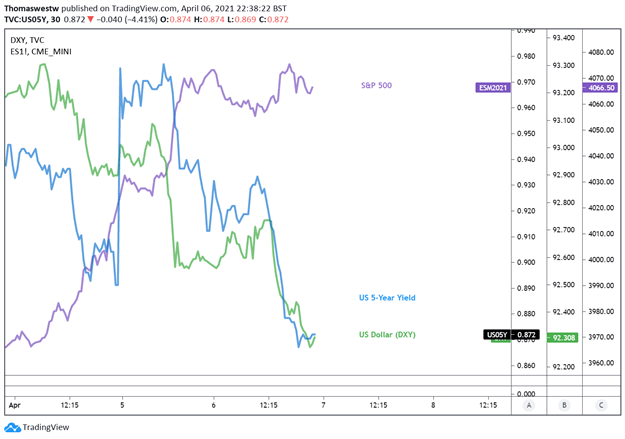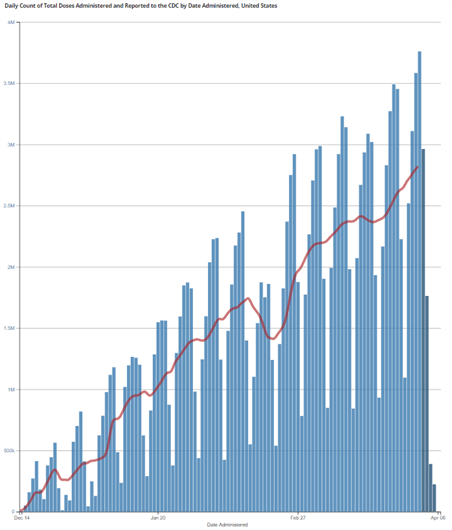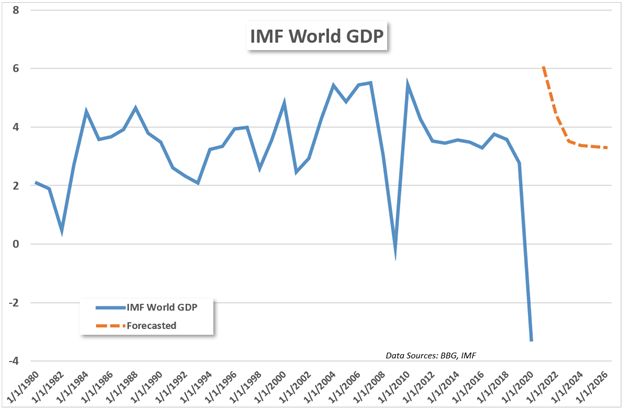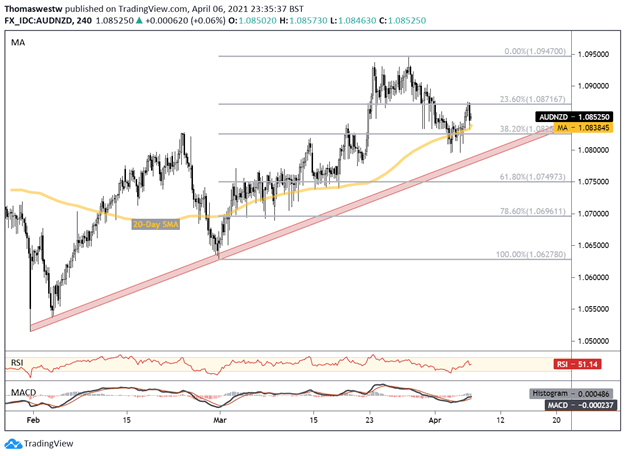Australian Dollar, S&P 500, Treasury Yields, RBA, AUD/NZD -Talking Points
- US stocks end slightly lower before President Biden updates US Covid situation
- IMF World Economic Outlook updated 2021 GDP projection hits record high
- AUD/NZD looks to hold its broader trend higher with eyes on the RBA FSR
The Quiz
Discover what kind of forex trader you are
US stocks pulled back on Tuesday after the S&P 500 and Dow Jones Industrial Average (DJIA) hit a record high to start the week. Still, the declines were moderate across the board, with the Dow closing 0.29% lower. Small-cap stocks followed closely, reflected by the Russell 2000’s 0.25% loss, while technology stocks also moved lower, with the Nasdaq 100 index inching 0.14% lower. Volatility increased for the second consecutive day via the VIX volatility index, which gained just over 1%.
Elsewhere, the US Dollar moved lower against many of its major peer currencies. The weaker Greenback followed an uptick in Treasury buying that pushed yields lower, particularly in the 5-year note, which saw a 4.41% decline. According to overnight index swaps, market-based expectations of a rate hike by January 2022 fell to 8.5% from 15.6% last week. Given the Fed’s recent commitment to not raising rates before 2024, it appears rate bet traders are now capitulating to that reality.
S&P 500, 5-Year Treasury Yield, US Dollar (DXY) – 30-Min Chart

Chart created with TradingView
Despite the move lower on Wall Street, US indexes remain postured at or near all-time highs as the post-pandemic economic recovery continues to chug along. Tuesday morning saw the Labor Department’s Job Openings and Labor Turnover Survey (JOLTS) February report cross the wires. The report – measuring monthly job openings, layoffs, and related metrics – showed a healthy pickup in job openings at 7.367 million, according to the DailyFX Economic Calendar.
The report is an encouraging sign for the US labor market as the American economy continues to reopen as the vaccination rate trends higher. Speaking of vaccinations, President Joe Biden spoke Tuesday afternoon to give an update on the state of vaccinations. The US leader stated, “by the end of May, the vast majority of adult Americans will have gotten at least their first shot.” Indeed, the US vaccination rollout has proceeded smoothly relative to other major economies, with the 7-day moving average of new doses administered at 2.82 million, per the CDC.
US Vaccine Doses Administered – Daily Count with 7-Day Moving Average

Source: covid.cdc.gov
Wednesday’s Asia-Pacific Outlook
Asia-Pacific stocks may see a neutral open following the lackluster performance on Wall Street. Tuesday saw Australia’s ASX 200 climb 0.84% following the Reserve Bank of Australia’s (RBA) April policy statement. The central bank reiterated its accommodative posture despite the country’s economic growth and low Covid rates. The Aussie-Dollar gave a muted reaction but paced higher overnight on broad USD weakness. Australia will see a final March services PMI report from Markit cross the wires today. Later this week, the RBA will release its bi-annual financial stability review.
China’s CSI 300 index moved 0.41% lower on Tuesday despite a report from Caixin showing the economic powerhouse’s service sector rose to a 3-month high at 54.3 in March. A high point in the report shows that business confidence surged to the highest level since 2011, as the post-pandemic fog continues to clear. Hong Kong’s Hang Seng Index (HSI) will begin trading after an extended holiday weekend.
The International Monetary Fund (IMF) updated its World Economic Outlook (WEO) overnight, raising its global growth projection to 6.02% for 2021 – the highest on record. The big number represents an economy emerging from a global pandemic, bolstered by pent-up demand along with more fiscal support. While the 2022 outlook drops to 4.4% for 2022, the update is an improvement over the prior WEO.

AUD/NZD Technical Outlook
Despite a recent swing higher, the Australian Dollar remains lower on the month versus its New Zealand counterpart. Still, the broader trend remains higher, stemming from the January swing low, is intact. A supportive 20-day Simple Moving Average (SMA) may help guide prices higher. A break below the SMA would open up a test of trendline support.
To the upside, the March high of 1.0947 is within striking distance at less than 1% higher from current prices. A center line crossover from a rising MACD line may help bolster some bullish sentiment in the currency pair. The Relative Strength Index (RSI), meanwhile, is trending neutrally near its 50 midpoint.
AUD/NZD4-Hour Chart

Chart created with TradingView
AUD/NZD TRADING RESOURCES
- Just getting started? See our beginners’ guide for FX traders
- What is your trading personality? Take our quiz to find out
- Join a free webinarand have your trading questions answered
- Subscribe to the DailyFX Newsletter for weekly market updates
--- Written by Thomas Westwater, Analyst for DailyFX.com
To contact Thomas, use the comments section below or @FxWestwateron Twitter

